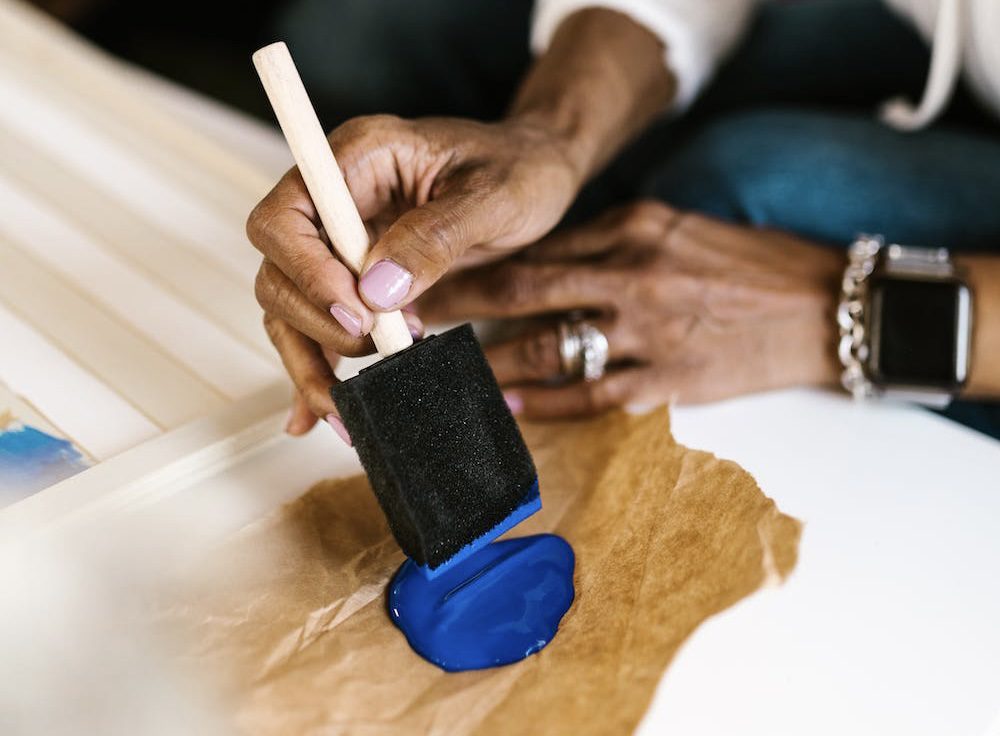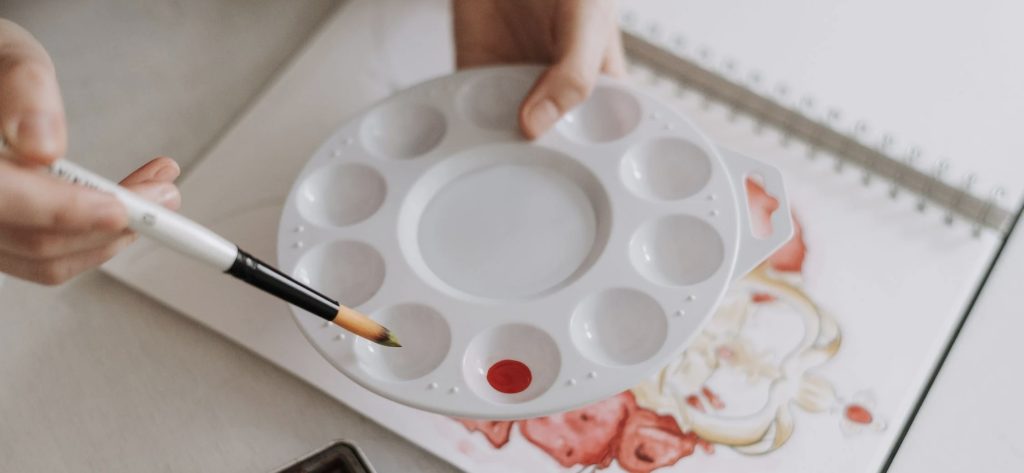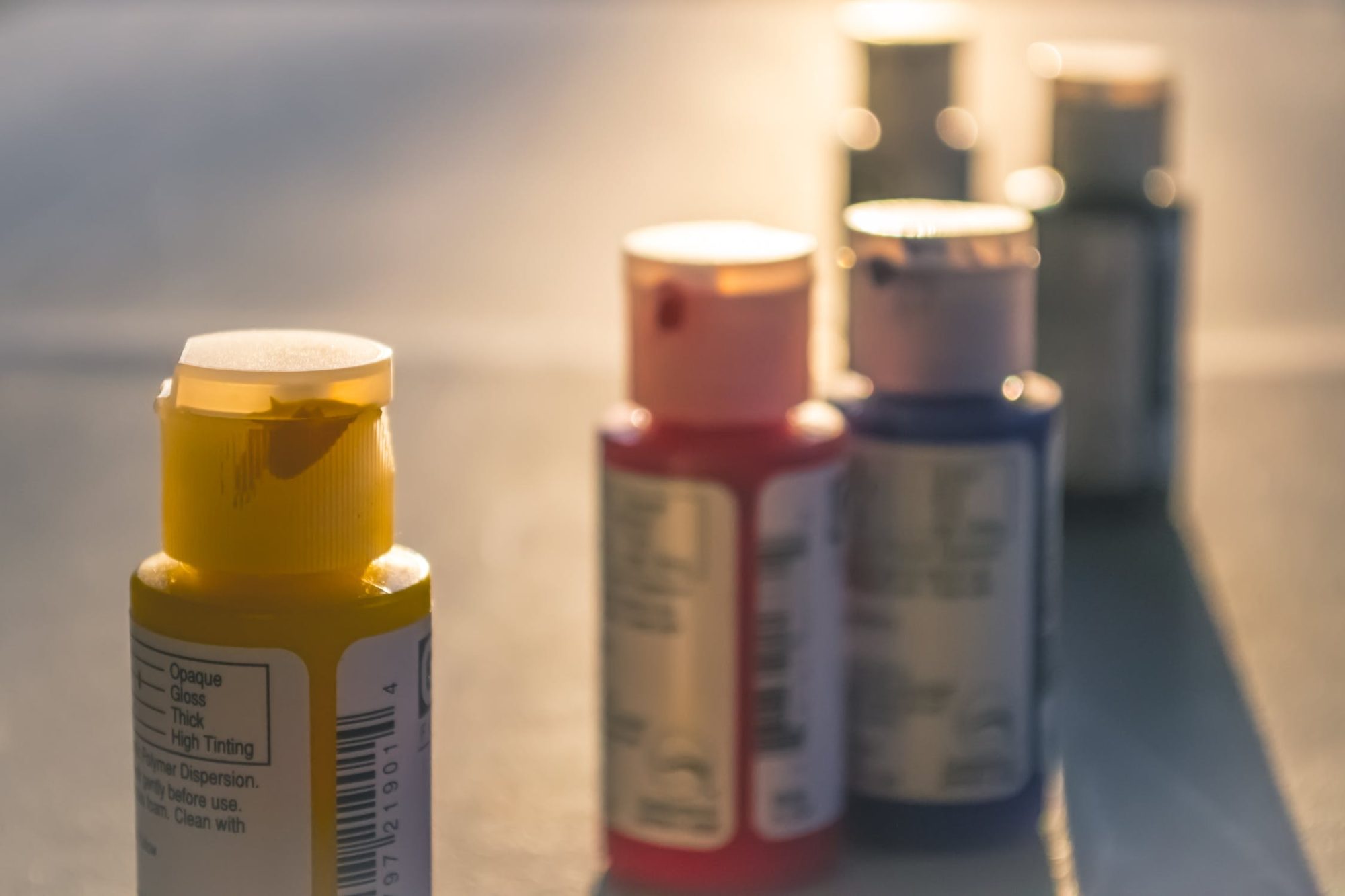Welcome to the world of acrylic paint! There are some key methods and tips on supplies for getting introduced to acrylic painting on canvas that can greatly help you in your journey.
Best surfaces to paint on
Canvas and wood panels are the best surfaces to paint on with acrylic paints. Canvas is the preferred, and most common, surface for all acrylic painting. You do not even need to prep or prime the canvases and woods, especially if you are purchasing them at an art supplies store. You can also paint on thicker paper, usually over 80lb.
Acrylic paint should not be used on plain copy paper. It will seep through the paper and not create a nice finish.
Here are some important things to know about acrylic paint on canvas:
Quick drying times
Acrylic paints dry relatively quickly compared to oil paints. This allows for faster layering and the ability to work on multiple layers in a shorter amount of time. However, this also means you need to work efficiently to blend and create smooth transitions.
Acrylic paint is water based
Acrylic paints are water-soluble, which makes them easy to clean up with just water and soap. This simplifies the painting process and reduces the need for harsh solvents or chemicals for cleaning brushes and palettes.
Versatility
Acrylic paints are used in various styles, from realistic to abstract. They mimic the qualities of watercolor or oil paint, and their versatility allows artists to experiment with a wide range of techniques.
Layering and Opacity
Acrylic paints are water based paints. You should use soft and thin paintbrushes that can be made of any material, usually synthetic brushes. This is because of how thin acrylic paint is and the low opacity that it has. Canvases are often very light in color which means that it can show through color easily if applied too thin.
Another option for painting is foam or sponge brushes. These are typically used in larger arts and craft settings and are easier to use for beginners. However, they are much less precise and create much thinner layers of paint.

Methods for beginners:
- Choose a Simple Subject:
- For your initial paintings, choose a subject that is relatively simple. A single object, a basic landscape, or a simple still life can be good choices.
- Plan Your Composition:
- Sketch your subject lightly on the canvas using a pencil. This helps you establish proportions and layout.
- Limit Your Color Palette:
- Start with a limited color palette to avoid overwhelming yourself. Choose a warm and a cool version of each primary color (red, blue, yellow), plus white and black.
- Pre-mix Your Colors:
- On your palette, pre-mix the colors you’ll use in your painting. This helps you establish your color scheme before you start.
- Work in Layers:
- Start with an underpainting or background layer. Acrylics dry quickly, so you can build layers relatively fast.
- Work from the background to the foreground, applying successive layers.
- Experiment with Brushwork:
- Experiment with different brush techniques like dry brushing, stippling, and blending.
- Try using a variety of brush sizes to achieve different textures and effects.
- Practice Blending:
- Acrylics allow for both wet-on-wet and wet-on-dry blending. Experiment with both techniques to see which suits your style.
- Don’t Fear Mistakes:
- Acrylics are forgiving. If you make a mistake, allow the layer to dry and then paint over it. This is an excellent way to learn and improve.
- Embrace Texture:
- Acrylics can create wonderful texture. Experiment with palette knives and layering techniques to achieve depth and tactile quality.
- Observe Values:
- Pay attention to the values (lightness and darkness) of your colors. This is crucial for creating a sense of dimension in your paintings.
- Learn from Observation:
- Study objects, scenes, and photographs to understand how light and shadow interact. This will improve your understanding of form and composition.
Different techniques for applying acrylic paint on canvas
- Wet-on-Wet: Apply wet paint onto a wet surface. This technique allows for smooth blending and soft transitions.
- Dry Brushing: Use a mostly dry brush to create textured and broken color effects.
- Stippling: Apply paint with a stippling brush or tapping motion to create a stippled, textured surface.
- Cross-Hatching: Use overlapping brush strokes to create areas of texture and visual interest.
- Glazing: Apply thin, translucent layers of color on top of dried layers to create depth and subtle color shifts.
Make sure to wear an apron or clothing that can be stained
Acrylic paint is very difficult to get out of clothing. Wearing an apron or old clothing that you do not care about is recommended. Acrylic paint dries very quickly and does not come out!
How/Where to mix acrylic paint colors
For starters, acrylic paint can be mixed on paper plates. Using a thicker surface is recommended because the paint can often seep through thin materials such as plain paper.
Plastic pallets are popular as well for mixing paint colors. They are easy to rinse off and can be re-used frequently.
For mixing paint colors, simply squeeze or scoop out the paint onto your pallet to reach your desired color combination. You can mix with either the paintbrush or a small mixing spatula.

Drying time for acrylic paints
Acrylic paints dry very quickly! Most of the time, it dries quicker than its other competitors, watercolor and oil. The nice thing about this is that its then possible
FAQ:
Can you paint acrylic directly on canvas?
Yes, you can paint with acrylic directly on canvas, especially “stretched” canvas, which they sell at art supplies stores!
How do you start painting on canvas with acrylic?
You do not need to prime your canvas. If you would like a smoother surface though, you can use an acrylic gesso to put on the canvas (and let dry) before painting.
Do I need to prime my canvas before acrylic painting?
No, you do not need to prime your canvas. You can if you would like to!
What do you need to paint on canvas with acrylic?
All that you need to paint on canvas with acrylic paint is a cup of water, paintbrushes or paint sponges, and a pallet to mix your paints on!

